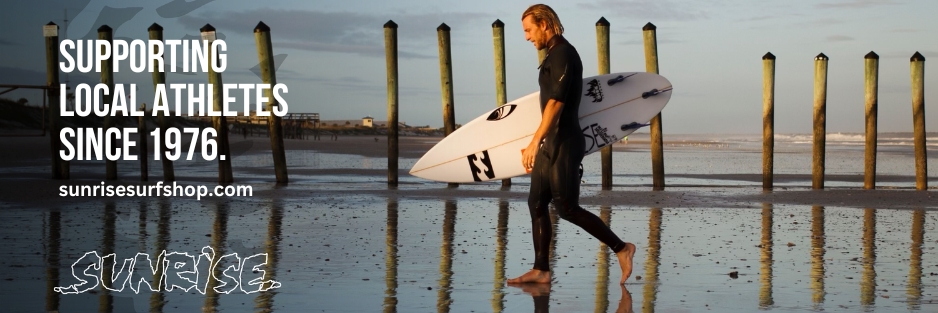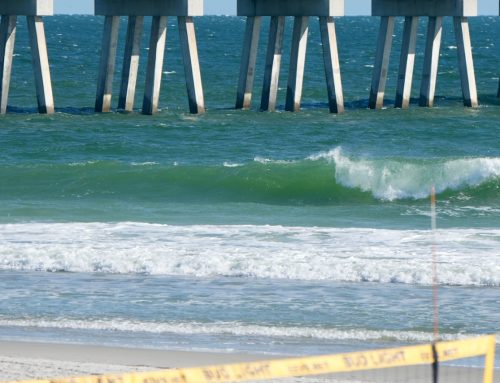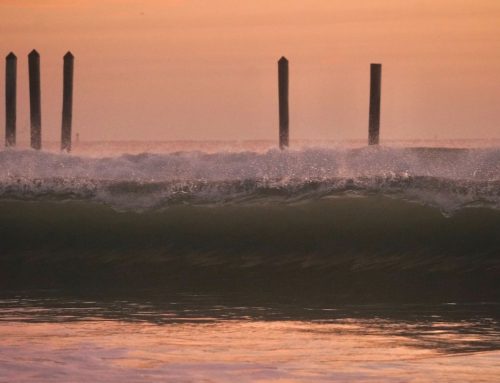The Edge – Volume 63
By Glenn T Goodwin, PhD 
A new, all-women Surf Club in Sri Lanka is enriching the country’s burgeoning surfing scene while defying cultural expectations.
I had a chance to live in Sri Lanka for three weeks doing humanitatian relief work after the 2004 tsunami. The tragedy of lost lives and communities just made the harsh vibe of a chronic politically torn culture even more tense. Although much of the east coast was obliterated, I did get a chance to surf at Arugam Bay, (one of the favorite spots for Aussie surfers and one of mine too, my memory still reminds me of the sweet waves at Arugam). 
When I came across this article, I was stoked for many reasons. First, because I know how difficult daily life can be in Sri Lanka. Second, its all about the surfer girls and third, because the desire these girls have to create positivity in a culture of so much negativity and hard times. Kudos to these ladies and may we all be inspired…
STORY BY ZINARA RATHNAYAKE
PHOTOGRAPHS BY TOMMY SCHULTZ
The rising sun is just beginning to paint the eastern skies in shades of vermilion, but there are already a number of surfers just beyond the breakers, scanning the lightening horizon for the perfect wave.
One of them is Shamali Sanjaya, one of a growing number of female surfers who hail from the tiny fishing community of Arugam Bay, located on the eastern coast of Sri Lanka. Just a few years ago, she would have been busy helping to prepare her family’s first meal of the day but now, as a member of Arugam Bay Girls Surf Club, Sri Lanka’s first and only surf club run by local women, she has the new-found freedom to paddle out onto the ocean waters.
“Whenever I hit the waves, I feel like I’m conquering the world,” declares the bright-eyed Shamali, who is the founding president of the club. “It gives me the confidence that I can achieve anything.”
The inception of the club is thanks in part to the hard work of Tiffany Carothers. The Californian native and former HR manager settled down in Arugam Bay eight years ago. Like many surfers, she was drawn by the appeal of Main Point, which on a good day receives southeast swells of three to five feet, and waves that break on the reef and roll over for 400 to 600m.
Tiffany first visited Arugam Bay in January 2005 with her husband Cody, also a surfer. They came to help Cody’s friends rebuild their homes after the devastating Indian Ocean Tsunami, which had badly impacted this stretch of coastline. That short visit turned into a long-term residence when the couple moved to Arugam Bay in 2011 with their two kids. “Everything about Arugam Bay appealed to us,” Tiffany says. “We loved the feel of living in a quiet fishing village, with gorgeous beaches, jungle and epic surf.”
It was in this close-knit community where the couple first met Shamali and her sister Inoka Sanjaya. They were neighbours, who quickly became close friends. “[When I first moved here], I invited them to come surf with me,” Tiffany recalls, sitting in the living room of her small two-storey house, which is situated in the heart of the village.
“The girls’ brother, Asanka, had been the national surf champion for a long time but it still wasn’t very accepted for girls to surf,” the 36-year-old American shares. “Both sisters would join me once in a while, but it was frowned upon by the community.”
Shamali had already had a taste for the sport, having been surfing twice before. “I loved it. I thought if men can surf, why can’t women do it too?” the 30-year-old says, a smile playing on her lips.
The problem she and many other local women faced was the enduring belief that the role of women is limited to the domestic sphere. Traditionally, the Lankan woman is expected to be a daughter, sister, mother and little else.
“We lost our parents at a young age. It was our brother Asanka who looked after us,” Shamali explains. “He was afraid that something would happen to us or that people in the village would spread rumours about us for hanging out with a Western woman.”
 Many villagers still held the stereotypical impression that Western surfers were skimpily clad and partied hard. While that was fine for the tourists who came here for the surfing, it didn’t fit with the community’s beliefs on how their young women should behave.
Many villagers still held the stereotypical impression that Western surfers were skimpily clad and partied hard. While that was fine for the tourists who came here for the surfing, it didn’t fit with the community’s beliefs on how their young women should behave.
The group has had to work hard to overcome these misconceptions. According to Shamali, Tiffany earned the respect of the villagers because her lifestyle defied those stereotypes. “She didn’t wear revealing clothes, she didn’t drink and she didn’t go to parties.”at Western surfers were skimpily clad and partied hard. While that was fine for the tourists who came here for the surfing, it didn’t fit with the community’s beliefs on how their young women should behave.
While Tiffany was accepted easily into the local community, it took Shamali a little longer to convince her brother it was okay for women to surf. Oftentimes, she would go with Tiffany to hidden spots to practise surfing, without her brother’s knowledge.
These covert surf sessions continued taking place until May 2015, when Tiffany met Australians Sara Yani Sands and Janiece Walker at the Surf + Social Good Summit held in Bali. The four-day event saw the participation of many socially conscious surfers from across the world, who debated how they could use surfing to empower marginalised communities.
Teaming up with the two Australians, Tiffany decided to hold what became the first Girls Make Waves event at Arugam Bay. But it took a lot of hard work just to get the girls to the event.
“It was very unusual. We’d never heard of local girls who surf; we hadn’t even seen a photo of a local girl surfing,” recalls Denagama Vithanaralage Renuka, the fortysomething mother of club member, Isuri Anupama. “I was worried the villagers would spread rumours if my daughter engaged in something that’s normally prohibited for Sri Lankan women.”
To try and change those attitudes, Tiffany and Shamali went door to door to seek parental permission before the event. Those efforts saw 30 women, aged between 15 and 40, turn up to the first Girls Make Waves in June 2015. Each participant was provided with leggings and T-shirts to wear. The local women who came fell in love with surfing almost immediately.
“It was the first day I touched a surfboard. I didn’t think I’d be able to balance or stand on the board, but I could,” says 22-year-old Isuri, the sense of pride evident in her voice. “I felt very happy and everyone said I had a natural talent for surfing.”
Because of the positive feedback, Tiffany and Shamali decided to make the gathering a weekly affair. Every other Sunday, the girls meet on the beach for yoga, and on the other Sundays, surf sessions or swimming lessons in the pool at the Hideaway Arugam Bay; a local resort that has also supported the club’s activities. Over time, an understanding has developed between the girls and their families that as long as they fulfilled their household duties, they were no longer restricted from surfing.
“Sometimes, I still get worried about Isuri’s safety, but we have realised there’s nothing wrong if our girls surf,” says a smiling Renuka.
In fact, surfing has now become a family affair. One club member, 30-year-old Pulanthiran Nadiya, often takes her daughters – aged four and 11 – with her when she surfs. In turn, this has led to more young girls asking to join the club, which was officially registered under the Surfing Federation of Sri Lanka in August 2018.
Since then, Salty Swamis – a café and surf shop in Sri Lanka’s Hikkaduwa – has donated six surf boards for their use. “Being surfers ourselves, and identifying the lack of local female participation in the burgeoning surf culture of Sri Lanka, we find it important to encourage and help the process of a local girls’ surf club,” says one of Salty Swamis’ co-founders, Yanik Tissera.
 There does also seem to be a possibility that their hobby could turn into a career. Since Arugam Bay is now an established spot on the global surf circuit, many of the villagers make their living working in the area’s restaurants and bars or as surf instructors for tourists. At the same time, however, many women are uncomfortable taking lessons from male instructors and so there’s always a high demand for female surf coaches in Arugam Bay. Tiffany believes that some of the club members can fill this void.
There does also seem to be a possibility that their hobby could turn into a career. Since Arugam Bay is now an established spot on the global surf circuit, many of the villagers make their living working in the area’s restaurants and bars or as surf instructors for tourists. At the same time, however, many women are uncomfortable taking lessons from male instructors and so there’s always a high demand for female surf coaches in Arugam Bay. Tiffany believes that some of the club members can fill this void.
But perhaps the biggest win for club president Shamali is that her brother Asanka has come around. In early 2015, he watched as his sister chased the waves and finally recognised her natural talent.
“I saw that she not only has the skills, but it truly made her happy,” says the soft-spoken Asanka. Today, Asanka gives Shamali surfing lessons at Main Point.
The women surfers of Arugam Bay have certainly come a long way in a short time, and surfing has given them an opportunity to enter the public sphere, one where women are often absent.
At 40, Kanesalingam Nahanthani is the oldest club member. The mother of four shares, “Surfing gives me a sense of freedom and happiness I’ve never experienced before. Now, I feel like I am part of the wider society, and not just a housewife.” With a grin, she adds, “I’m a surfer too.”
Keep inspired, keep your edge…
Check out Girls Make Waves
A VIDEO ABOUT SRI LANKA’S LADY SLIDERS!














